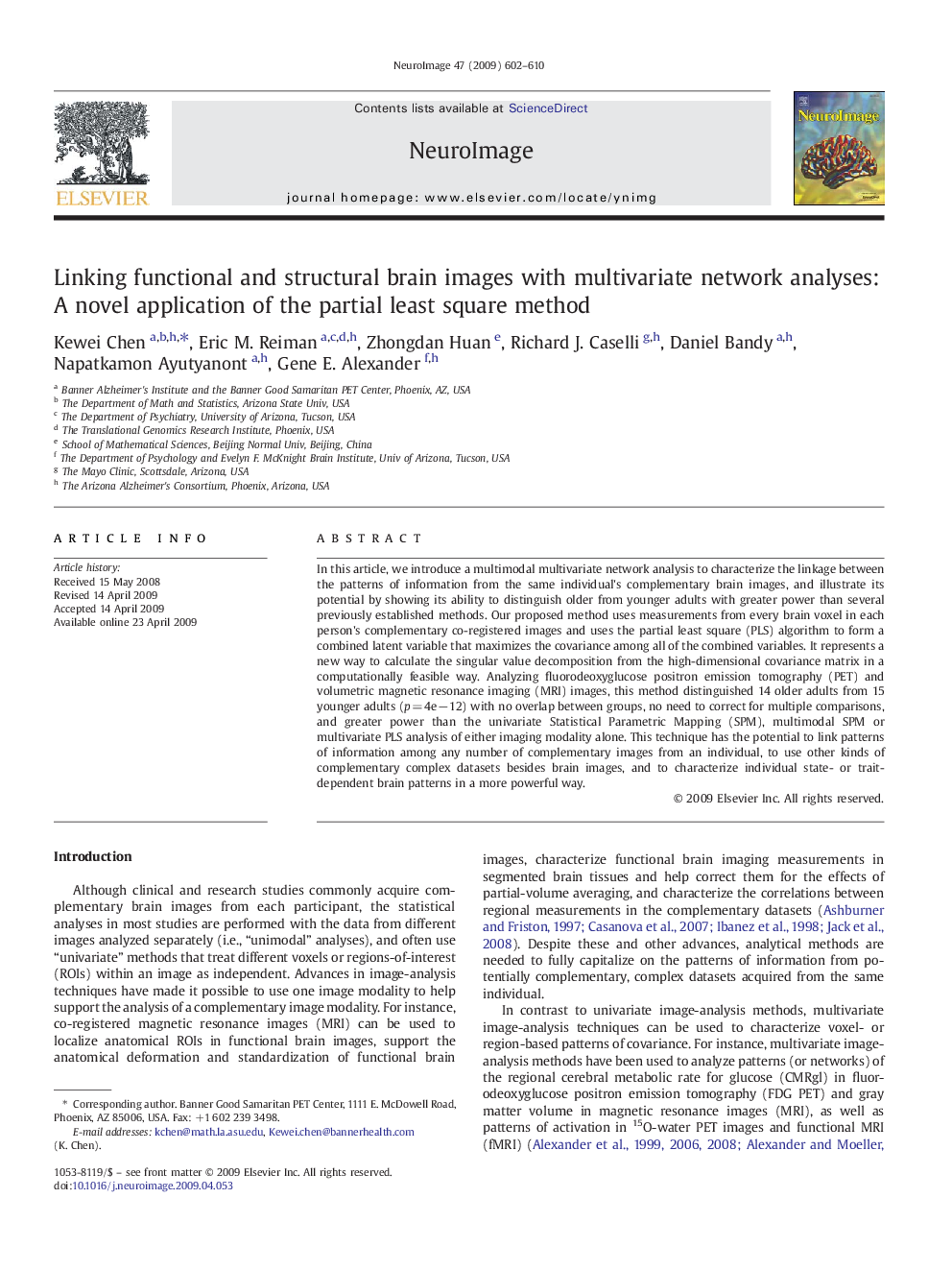| Article ID | Journal | Published Year | Pages | File Type |
|---|---|---|---|---|
| 6038156 | NeuroImage | 2009 | 9 Pages |
Abstract
In this article, we introduce a multimodal multivariate network analysis to characterize the linkage between the patterns of information from the same individual's complementary brain images, and illustrate its potential by showing its ability to distinguish older from younger adults with greater power than several previously established methods. Our proposed method uses measurements from every brain voxel in each person's complementary co-registered images and uses the partial least square (PLS) algorithm to form a combined latent variable that maximizes the covariance among all of the combined variables. It represents a new way to calculate the singular value decomposition from the high-dimensional covariance matrix in a computationally feasible way. Analyzing fluorodeoxyglucose positron emission tomography (PET) and volumetric magnetic resonance imaging (MRI) images, this method distinguished 14 older adults from 15 younger adults (p = 4eâ 12) with no overlap between groups, no need to correct for multiple comparisons, and greater power than the univariate Statistical Parametric Mapping (SPM), multimodal SPM or multivariate PLS analysis of either imaging modality alone. This technique has the potential to link patterns of information among any number of complementary images from an individual, to use other kinds of complementary complex datasets besides brain images, and to characterize individual state- or trait-dependent brain patterns in a more powerful way.
Related Topics
Life Sciences
Neuroscience
Cognitive Neuroscience
Authors
Kewei Chen, Eric M. Reiman, Zhongdan Huan, Richard J. Caselli, Daniel Bandy, Napatkamon Ayutyanont, Gene E. Alexander,
